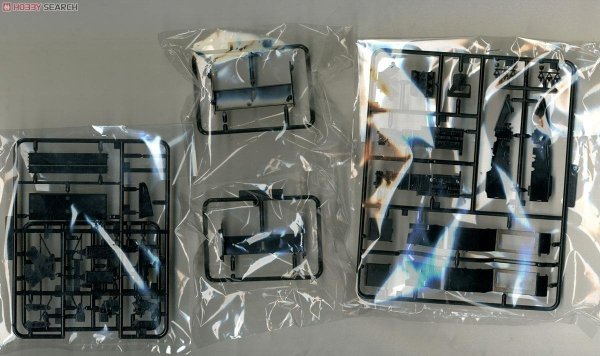-
Załączniki bezpieczeństwa
Załczniki do produktuZałączniki dotyczące bezpieczeństwa produktu zawierają informacje o opakowaniu produktu i mogą dostarczać kluczowych informacji dotyczących bezpieczeństwa konkretnego produktu
-
Informacje o producencie
Informacje o producencieInformacje dotyczące produktu obejmują adres i powiązane dane producenta produktu.Fujimi
-
Osoba odpowiedzialna w UE
Osoba odpowiedzialna w UEPodmiot gospodarczy z siedzibą w UE zapewniający zgodność produktu z wymaganymi przepisami.
Fujimi 091952 Lotus 97-T-1985 (GP3) Renault 1/24
Plastikowy model samochodu do sklejania. Nie zawiera kleju ani farb.
Lotus 97T to brytyjski bolid Formuły 1, który zadebiutował na torze w Grand Prix Brazylii w 1985 r. i startował w wyścigach F1 tylko w tym jednym roku. Lotus 97T był samochodem wyścigowym Formuły 1 zaprojektowanym przez Gérarda Ducarouge'a i zbudowanym przez Team Lotus na potrzeby Mistrzostw Świata Formuły 1 w 1985 roku. Samochód, będący rozwinięciem modelu 95T z poprzedniego roku, był napędzany turbodoładowanym silnikiem Renault EF15B V6 o pojemności 1,5 litra i poruszał się na oponach Goodyeara. John Player Special nadal był sponsorem tytularnym zespołu, a Elf i Olympus sponsorami drugorzędnymi.
Model 97T miał ogólnie prostą konstrukcję, w aerodynamice wykorzystano elementy z nieistniejącego już projektu Lotus 96T Indycar, a także inny element designu Lotusa: wczesną formę desek barkowych. Zostały one umieszczone pomiędzy przednimi kołami a bocznymi osłonami, poprawiając przepływ powietrza wokół boku samochodu. Ducarouge ominął także zakaz stosowania "wingletów" na tylnych błotnikach samochodów z 1984 r., umieszczając je zamiast tego na tylnych krawędziach bocznych słupków.
Największym sukcesem Lotusa w 1985 roku było podpisanie kontraktu z wschodzącą gwiazdą Ayrtonem Senną z zespołu Toleman, który zastąpił wieloletniego kierowcę Nigela Mansella, który podpisał kontrakt z Williamsem. Senna, pierwszy kierowca podpisany z zespołem od śmierci Colina Chapmana, partnerował Włochowi Elio de Angelisowi, który zajął trzecie miejsce w mistrzostwach kierowców w poprzednim sezonie i miał wiele obiecujących wyników z modelem 95T.
Model 97T okazał się konkurencyjny w sezonie, zdobywając 8 pole position, 7 z Senną i 1 z de Angelisem, oraz 3 zwycięstwa. Pierwszym zwycięstwem Senny był wspaniały występ w Grand Prix Portugalii, gdzie wygrał o ponad minutę w monsunowych warunkach. Jego drugie zwycięstwo miało miejsce w Grand Prix Belgii na torze Spa, które odbyło się w mokrych i suchych warunkach. De Angelis dołożył trzecie zwycięstwo (swoje drugie i ostatnie w F1, oba dla Lotusa) w Grand Prix San Marino, po tym jak pierwotny zwycięzca Alain Prost (McLaren) został zdyskwalifikowany godzinę po zakończeniu wyścigu z powodu braku paliwa w jego McLarenie-TAG o 2 kg za niskiej wadze. Lotus zajął czwarte miejsce w Mistrzostwach Konstruktorów, choć zrównał się punktami z Williamsem, który zajął trzecie miejsce dzięki większej liczbie zwycięstw w wyścigach.
The Lotus 97T was a Formula One racing car designed by Gérard Ducarouge and built by Team Lotus for use in the 1985 Formula One World Championship. A development of the previous year's 95T, the car was powered by the turbocharged 1.5-litre Renault EF15B V6 engine and ran on Goodyear tyres. John Player Special continued as the team's title sponsor, with Elf and Olympus as secondary sponsors.
The 97T was of a generally simple design, it used elements from the defunct Lotus 96T Indycar project in the aerodynamics with another piece of Lotus design: an early form of bargeboards. These were placed between the front wheels and the side pods improving airflow around the side of the car. Ducarouge also got around the ban on the 'winglets' seen on the rear wings of the 1984 cars by placing them instead on the rear edges of the side pods.
Lotus' major coup for 1985 was signing rising star Ayrton Senna from the Toleman team to replace long time team driver Nigel Mansell who had signed with Williams. Senna, the first driver signed to the team since the death of Colin Chapman, partnered Italian Elio de Angelis who had finished third in the previous season's drivers' championship and had had many promising results with the 95T.
The 97T proved competitive during the season, taking 8 poles, 7 with Senna and 1 with de Angelis, and 3 wins. Senna's first was a brilliant performance in the Portuguese Grand Prix where he won by over a minute in monsoon conditions. His second came in the Belgian Grand Prix at Spa, held in wet/dry conditions. De Angelis added a third win (his 2nd and last win in F1, both for Lotus) at the San Marino Grand Prix after original winner Alain Prost (McLaren) was disqualified an hour after the race finished due to his out of fuel McLaren-TAG being 2 kg underweight. Lotus finished fourth in the Constructors' Championship, albeit tied on points with Williams who finished in third place owing to their greater number of race victories.
The 97T marked the start of a brief return to the successful days of the 1960s and 1970s for Lotus, which was continued by the 98T of 1986 and the Honda-powered 99T of 1987. The 97T had perhaps the best handling of any car in the 1985 season, and it was at its most competitive on tight, slow street circuits such as Monaco, Detroit and Adelaide, although it was also competitive on almost every other type of circuit it raced on.
Senna's 97T was added to Gran Turismo 6 via the May 2014 update as part of the game's new feature "Ayrton Senna Tribute" in two liveries: the Gold Leaf livery (identical to that of de Angelis's 97T apart from the driver number and name) and an in-game only "Team Lotus Special" livery (which was used instead of "John Player Special" due to tobacco advertising regulations).




























 1 szt.
1 szt.

 41 szt.
41 szt.


 4 szt.
4 szt.

 2 szt.
2 szt.


